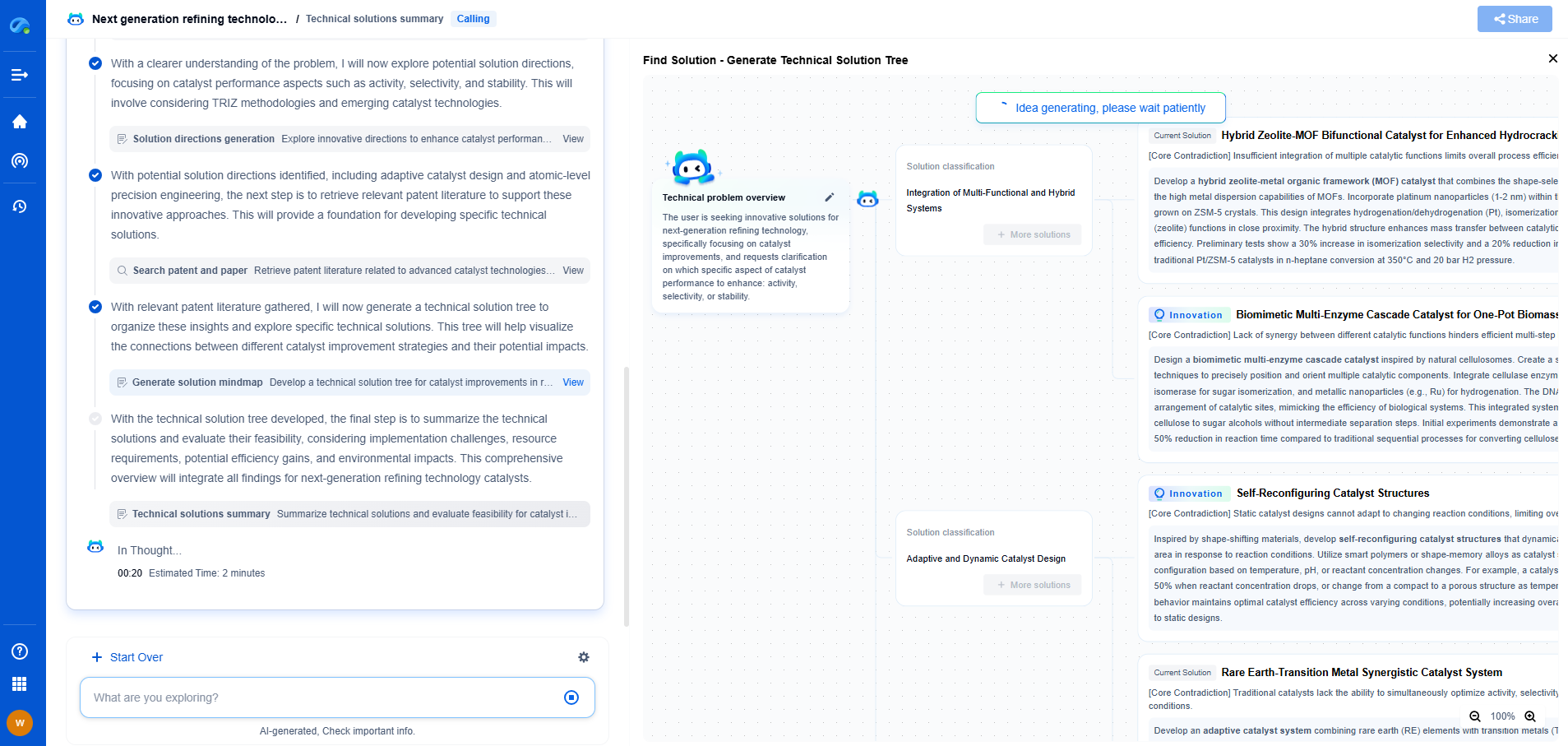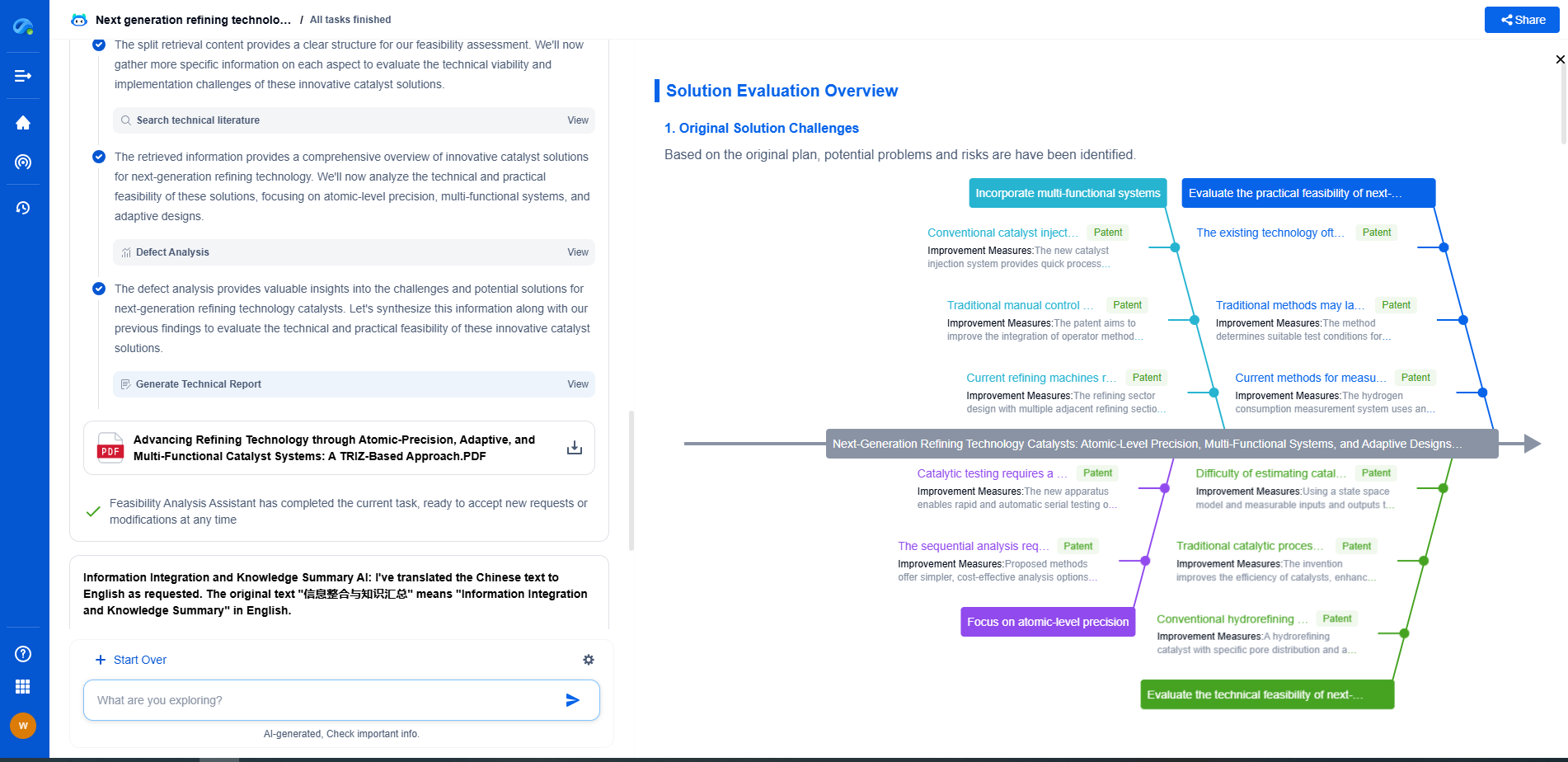Which Capacitor Types Are Most Resistant to Humidity-Induced Aging?
JUL 9, 2025 |
Capacitors are essential components in electrical circuits, and selecting the right type for your specific application can significantly impact the performance and longevity of the system. One of the critical factors that affect capacitor lifespan is exposure to humidity, which can cause aging and degradation. In this discussion, we will explore which types of capacitors are most resistant to humidity-induced aging and why they are better suited for environments where moisture is a concern.
Humidity's Impact on Capacitors
Humidity can adversely affect capacitors in several ways. The most common issues include dielectric breakdown, increased leakage current, and corrosion of internal and external elements. These problems can lead to a decrease in capacitance, increased equivalent series resistance (ESR), and ultimately, failure of the component. To mitigate these risks, selecting capacitors with materials and designs that resist moisture is crucial.
Ceramic Capacitors: A Mixed Bag
Ceramic capacitors are widely used in various applications due to their small size, low cost, and good performance characteristics. However, their resistance to humidity-induced aging largely depends on the type of ceramic dielectric material used. For instance, class I ceramic capacitors, which use materials like titanium dioxide, are more stable and less sensitive to humidity. In contrast, class II capacitors, made with materials such as barium titanate, can absorb moisture more easily, leading to aging. Despite this, improvements in manufacturing processes, such as protective coatings, have been developed to enhance their humidity resistance.
Tantalum Capacitors: Resilient but with Caution
Tantalum capacitors are known for their excellent stability and reliability, particularly in high-temperature environments. They perform well in humid conditions due to their solid manganese dioxide electrolyte, which does not absorb moisture like liquid electrolytes. However, tantalum capacitors can be susceptible to failure if exposed to high humidity and surge currents simultaneously. To address this, advancements in tantalum capacitor technology have introduced versions with polymer electrolytes, which provide better humidity resistance and reduced risk of failure.
Film Capacitors: The Robust Option
Film capacitors are often heralded as the best choice for applications where humidity is a concern. This is because they use a plastic film as the dielectric material, which inherently resists moisture absorption. Types such as polyester (PET) and polypropylene (PP) film capacitors exhibit excellent humidity resistance, maintaining their performance characteristics over a wide range of environmental conditions. Their sealed construction further enhances their ability to withstand humid environments, making them the preferred choice in many industrial and automotive applications.
Aluminum Electrolytic Capacitors: Vulnerable to Humidity
Aluminum electrolytic capacitors, while popular for their high capacitance values and low cost, are among the most vulnerable to humidity-induced aging. The liquid electrolyte inside these capacitors can absorb moisture, leading to increased leakage current and corrosion of the aluminum electrode. Recent developments, such as solid polymer aluminum capacitors, offer improved performance in humid conditions, but traditional liquid electrolyte versions remain less resistant to humidity compared to other capacitor types.
Factors to Consider When Selecting Capacitors
When choosing capacitors for applications susceptible to humidity exposure, it's essential to consider several factors. The operating environment, including temperature and humidity levels, should guide your selection. Additionally, the specific requirements of your application, such as voltage, capacitance, and size constraints, will influence the best choice of capacitor. Consulting with manufacturers and reviewing datasheets for information on humidity resistance and testing standards can help in making an informed decision.
Conclusion: Balancing Performance and Durability
In conclusion, the resistance of capacitors to humidity-induced aging varies significantly among different types. Film capacitors stand out for their robust performance in humid conditions, while ceramic and tantalum capacitors offer varying degrees of resistance depending on their specific materials and construction. Aluminum electrolytic capacitors, though widely used, require careful consideration of environmental factors to mitigate the risks of humidity exposure. By understanding the strengths and weaknesses of each type, you can make more informed decisions to ensure the reliability and longevity of your electronic designs in humid environments.
Looking to accelerate your capacitor innovation pipeline?
As capacitor technologies evolve—from miniaturized MLCCs for smartphones to grid-scale energy storage devices—so must the way your team accesses critical knowledge.
Patsnap Eureka, our intelligent AI assistant built for R&D professionals in high-tech sectors, empowers you with real-time expert-level analysis, technology roadmap exploration, and strategic mapping of core patents—all within a seamless, user-friendly interface.
Try Patsnap Eureka now and discover a faster, smarter way to research and innovate in capacitor technology.
- R&D
- Intellectual Property
- Life Sciences
- Materials
- Tech Scout
- Unparalleled Data Quality
- Higher Quality Content
- 60% Fewer Hallucinations
Browse by: Latest US Patents, China's latest patents, Technical Efficacy Thesaurus, Application Domain, Technology Topic, Popular Technical Reports.
© 2025 PatSnap. All rights reserved.Legal|Privacy policy|Modern Slavery Act Transparency Statement|Sitemap|About US| Contact US: help@patsnap.com

